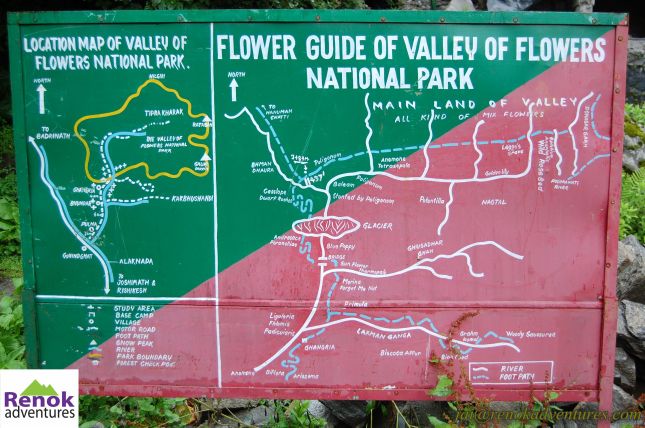Dayara Bugyal – The biggest meadow of Uttarakhand
Bugyal in the local mountain dialect means “High Altitude Meadow”. Trekking to Dayara Bugyal is one of the most beautiful places in Uttaranchal, situated at an elevation ranging from 10,000 – 12,000 ft. This vast meadow is second to none in natural beauty in Uttarakhand trekking circuit. The possibility of Nordic as well as Alpine skiing are immense here, since during winter it provides one of the best ski slopes in India spread over an area of 28 sq/kms, one can combine a trek and ski during winter trekking season.
Dayara Bugyal trek starts from two places Barsu and Raithal. The road to Dayara Bugyal branches off near Bhatwari- a little township on Uttarkashi Gangotri road about 35 kms. From Uttarkashi, Vehicles can go up to the village of Raithal from where one has to trek a steep incline covering a distance of about 7 kms to reach Dayara and the other route is via village Barsu, 10 kms from Bhatwari from where one has to trek about 8kms to Dayara Bugyal.

Gray langurs or Hanuman langurs, the most widespread langurs of South Asia, are a group of Old World monkeys constituting the entirety of the genus Semnopithecus.
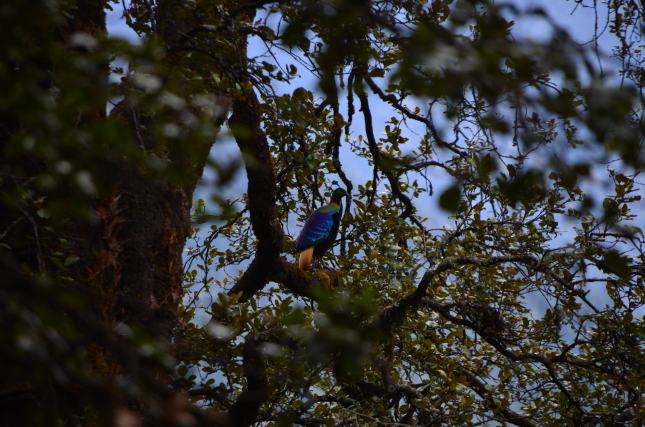
Monal – State Bird of Uttarakhand
This is the best time for birding as all the birds descends from high altitude to lower altitudes due to drop in temperatures.
If some one wants to do this trek here is the ideal itinerary
Day 1 Dehradun to Guest House at Barsu
Arrive at Dehradun/Haridwar in the morning, freshen up, have breakfast and leave for Barsu village Lunch on the way. Arrive at Camp by late afternoon and relax with a hot cup of tea and prepare yourself for trekking in Himalayas. The camp overlooks the Himalayan peaks of Gangotri I, II and III, Jaunli, Draupdi ka Danda and Srikanth.
Days 2 Barsu – Barnala (2700 m) 4 km / 4 hr
Have an early breakfast and get ready for a trekking to Barnala lake (2700 m) about 5 hours away. Trek through the dense forest of Pine and Oak trees. Lunch enroute. Reach Barnala by late afternoon. Explore the forest around the lake and do some bird watching. Barnala is great for bird watching, the most common birds here Whistling Thrush, Red Finch, Monal Pheasant, Koklas etc. Overnight stay in tents.
Day 3 Barnala – Dayara (3250 m) 5 km / 4 hr
Have breakfast and prepare to trek to Dayara. Hot lunch on arrival. The bugyals (meadows), spread over 28 sq kms, are grazing grounds for sheep and cattle and have a 360 degree view of the Himalayas. Spend rest of day walking around the meadows. Overnight stay in tents
Day 4 Dayara – Raithal 7 km / 4 hr
Wake up to a lovely sunrise and walk a little higher for a nice view of Bandarpoonch (6500 mtrs). After breakfast, we will start trekking to village Raithal. Reach camp by early evening. Relax with a hot cup of tea and sumptuous dinner with bonfire. Overnight stay in tents.
Days 5 Raithal – Dehradun / Haridwar
After breakfast leave for Dehradun/Haridwar. Lunch on way, arrive by late afternoon and catch train to go home..
Renok Adventures is having a fixed departure on various dates 3rd November, 10th November and 29th December. For more details please follow the link www.renokadventures.com
26.917000
75.817000
Tags: 25l trekking backpack, action shoes trekking, action trekking shoes, adidas trekking, adidas trekking shoes, adventure india, adventure tourism, adventure tours india, adventure travel india, adventure trekking, adventure trekking holidays, africa trekking, agence trekking, allibert trekking, alpine trekking, alps trekking, annapurna base camp, annapurna base camp trekking, annapurna basecamp trekking, annapurna circuit, annapurna circuit trek, annapurna circuit trekking, annapurna region trekking, annapurna round trekking, annapurna trek, annapurna trekking, annapurna trekking map, annapurna treks, asia trekking, asian trekking, atlas trekking, backpack trekking, backpacks for trekking, backpacks trekking, bali trekking, bangalore trekking club, base camp everest, base camp everest trek, base camp trekking, bata trekking shoes, bergsport, best trekking, best trekking backpack, best trekking backpacks, best trekking bike, best trekking bikes, best trekking gear, best trekking gps, best trekking pole, best trekking poles, best trekking shoes, best trekking watch, best trekking watches, bicycle trekking, bike trekking, bird watching, birding, birding trips, butterfly trekking handlebars, buy trekking poles, buy trekking shoes, camel trekking, camping and trekking, camping trekking, chang mai trekking, charity trekking, cheap trekking shoes, chennai trekking club, chiang rai trekking, clothes for trekking, coorg trekking, darjeeling trekking, define trekking, desert trekking, dharamsala trekking, dhaulagiri trekking, discovery trekking, dolpo trekking, e trekking, ebc trekking, eco trekking, elephant trekking, europe trekking, everest base camp, everest base camp trek, everest base camp trekking, everest base camp treks, everest basecamp trekking, everest region trekking, everest trek, everest trekking, everest trekking map, everest trekking tours, everest treks, extreme trekking, family trekking holidays, food for trekking, ganesh himal trekking, garhwal trekking, ghorepani trekking, glacier trekking, global trekking, globe trekking, go trekking, gokyo lake trekking, gokyo trekking, good trekking shoes, google trekking, gorilla trekking, gorilla trekking safari, gorilla trekking safaris, gps for trekking, gps trekking, grand canyon trekking, great wall trekking, head trekking shoes, helambu trekking, high altitude trekking, Hiking, hiking and trekking, hiking everest, hiking himalayas, hiking holidays, hiking in india, hiking in the himalayas, hiking india, hiking net, hiking poles, hiking the himalayas, hiking tours, hiking trekking, hiking trekking poles, himachal trekking, himalaya, himalaya trek, himalaya trekking, himalaya trekking tours, himalaya treks, himalayan glacier trekking, himalayan tours, himalayan trek, himalayan trekking, himalayan trekking companies, himalayan trekking holidays, himalayan trekking tours, himalayan treks, himalayas trek, himalayas trekking, himalayas trekking tour, holiday trekking, holidays trekking, horse trekking, hybrid trekking bikes, i trekking, ice trekking, india adventure, india hiking, india himalaya trekking, india trek, india trekking, india trekking tour, india trekking tours, india treks, indian himalaya trekking, indian trekking, indian trekking tours, jomsom muktinath trekking, jomsom trekking, jungle trekking, jungle trekking equipment, k2 trekking, kailash mansarovar trekking, kailash trekking tour, kanchenjunga trekking, karakoram trekking, katmandu, kerala trekking, kilimanjaro trekking, kilimanjaro trekking tour, kilimanjaro treks, kodachadri trekking, kokoda trekking, komperdell trekking pole, kumara parvatha trekking, la trekking tent, ladakh india, ladakh tour, ladakh tourism, ladakh tours, ladakh trek, ladakh trekking, ladakh trekking map, ladakh trekking tour, ladakh trekking tours, ladakh treks, ladakh zanskar trekking, ladies trekking shoes, langtang trekking, langtang valley trekking, leh ladakh, leh ladakh trekking, leh trekking, leki trekking poles, light trekking, light trekking shoes, lightweight trekking, lightweight trekking shoes, lonely planet trekking, lukla trekking, luxury trekking, machu picchu trekking, makalu trekking, manali trekking, manaslu trekking, mardi himal trekking, mont blanc trekking, mount everest base camp, mount everest base camp trek, mount everest hiking, mount everest trek, mount everest trekking, mount everest treks, mount kailash trekking, mount kilimanjaro trekking, mountain bike trekking, mountain trekking, mountain trekking equipment, mountain trekking shoes, mt everest base camp, mt everest base camp trek, mt everest trek, mt everest trekking, mt everest treks, mt kailash trekking, mt kilimanjaro trekking, munnar trekking, mustang trekking, nanda devi trekking, nike trekking shoes, nomad trekking, nordic trekking poles, nordic walking sticks, north india trekking, nz hiking, nz trekking, outdoor, outdoor outlet, outdoor shop, outdoor trecking, outdoor trekking, outdoorshop, patagonia trekking, photo trekking, pinatubo trekking, pokhara trekking, pony trekking, poon hill trekking, puma trekking shoes, quad bike trekking, quad trekking, rafting in india, rafting in rishikesh, rafting india, rainforest trekking, randonnee trekking, reebok trekking shoes, review trekking poles, rinjani trekking, rishikesh river rafting, rishikesh trekking, river rafting in rishikesh, river trekking, round annapurna trekking, runescape temple trekking, rwenzori trekking, sakleshpur trekking, salomon trekking shoes, sandakphu trekking, sapa trekking, sherpa trekking, shoes for trekking, shoes trekking, short trekking, sikkim trekking, sikkim trekking routes, simple treks, skandagiri trekking, ski trekking, snow leopard trekking, snow trekking, snow trekking shoes, socks trekking, south india trekking, star trekk, star trekking, star trekking song, swiss trekking, tasmania trekking, temple trekking, thamserku trekking, tibet trekking, tibet trekking tour, tibet trekking tours, tilicho lake trekking, timberland trekking shoes, tissot touch trekking, tissot trekking, top trekking, tours and trekking, tours trekking, training for trekking, tramping, travel insurance trekking, travel trekking, treaking, treck, trecking, tree top trekking, tree trekking, treetop trekking, trek, trek adventure, trek andes, trek annapurna, trek aventure, trek everest, trek everest base camp, trek himalaya, trek himalayas, trek holidays, trek in himalaya, trek in himalayas, trek in india, trek india, trek mount everest, trek the himalayas, trek to base camp everest, trek to everest base camp, trek to himalayas, trek to mount everest, trek tours, treking, trekk, trekke, trekked, trekkes, trekkin, trekking, trekking 2011, trekking accessories, trekking adventure, trekking adventure holidays, trekking adventures, trekking africa, trekking agencies, trekking agency, trekking alps, trekking america, trekking and camping, trekking and hiking, trekking annapurna, trekking annapurna circuit, trekking annapurna nepal, trekking apparel, trekking around annapurna, trekking around mumbai, trekking asia, trekking atlas, trekking attire, trekking backpack, trekking backpacks, trekking backpacks india, trekking bag, trekking bags, trekking bali, trekking bangalore, trekking bars, trekking bicycle, trekking bicycles, trekking bike, trekking bikes, trekking blog, trekking boot, trekking butterfly handlebars, trekking camping, trekking camps, trekking chang mai, trekking chiang rai, trekking clothes, trekking clothing, trekking clubs, trekking companies, trekking company, trekking darjeeling, trekking destinations, trekking equipment, trekking equipment delhi, trekking equipment india, trekking equipment list, trekking equipment mumbai, trekking equipments, trekking europe, trekking everest, trekking everest base camp, trekking expedition, trekking expeditions, trekking experience, trekking fahrrad, trekking fashion, trekking food, trekking footwear, trekking for charity, trekking for kids, trekking gadgets, trekking garhwal, trekking gear, trekking gear india, trekking gear list, trekking gears, trekking gloves, trekking gps, trekking grand canyon, trekking group, trekking groups, trekking guide, trekking guides, trekking handlebar, trekking handlebars, trekking hat, trekking hats, trekking hiking, trekking himachal, trekking himalaya, trekking himalayas, trekking himalayas india, trekking holiday, trekking holidays, trekking holidays in india, trekking holidays india, trekking horse, trekking in africa, trekking in alps, trekking in america, trekking in annapurna, trekking in asia, trekking in bali, trekking in bangalore, trekking in chennai, trekking in coorg, trekking in darjeeling, trekking in dolpo, trekking in europe, trekking in everest, trekking in garhwal, trekking in goa, trekking in himachal, trekking in himachal pradesh, trekking in himalaya, trekking in himalayas, trekking in himalayas india, trekking in hyderabad, trekking in india, trekking in indian himalaya, trekking in karnataka, trekking in kashmir, trekking in kerala, trekking in ladakh, trekking in langtang, trekking in leh, trekking in maharashtra, trekking in manali, trekking in mount everest, trekking in mumbai, trekking in munnar, trekking in mustang, trekking in nz, trekking in patagonia, trekking in pune, trekking in rishikesh, trekking in sapa, trekking in sikkim, trekking in tasmania, trekking in the himalaya, trekking in the himalayas, trekking in the himalayas india, trekking in the mountains, trekking in tibet, trekking in uttarakhand, trekking in uttaranchal, trekking in zanskar, trekking india, trekking india himalaya, trekking indian himalaya, trekking indian himalayas, trekking insurance, trekking jacket, trekking jackets, trekking jobs, trekking jungle, trekking kerala, trekking kilimanjaro, trekking kit, trekking kokoda, trekking ladakh, trekking ladakh zanskar, trekking langtang, trekking leh, trekking machu picchu, trekking machu pichu, trekking magazine, trekking magazines, trekking maps, trekking meals, trekking meaning, trekking monopod, trekking mont blanc, trekking mount everest, trekking mount kilimanjaro, trekking mountain, trekking mountains, trekking mt everest, trekking mt kilimanjaro, trekking mumbai, trekking near bangalore, trekking near mumbai, trekking nz, trekking outdoor, trekking outfit, trekking pack, trekking packages, trekking packs, trekking pant, trekking pants, trekking pants men, trekking pants women, trekking patagonia, trekking peak, trekking peaks, trekking photos, trekking pokhara, trekking pole, trekking pole review, trekking pole reviews, trekking poles, trekking poles leki, trekking poles review, trekking poles reviews, trekking rinjani, trekking routes, trekking routes in india, trekking rucksack, trekking rucksacks, trekking saddle, trekking sandals, trekking sandals men, trekking sapa, trekking shirts, trekking shoe, trekking shoes, trekking shoes adidas, trekking shoes bangalore, trekking shoes brands, trekking shoes delhi, trekking shoes india, trekking shoes mumbai, trekking shoes review, trekking shoes sale, trekking shoes women, trekking shop, trekking shops, trekking sikkim, trekking sites, trekking sleeping bag, trekking sleeping bags, trekking sock, trekking socks, trekking solo, trekking stick, trekking sticks, trekking stores, trekking stove, trekking sunglasses, trekking supplies, trekking t shirts, trekking tasmania, trekking tent, trekking tents, trekking the alps, trekking the amazon, trekking the himalayas, trekking tibet, trekking tips, trekking to everest, trekking to everest base camp, trekking to himalayas, trekking tour, trekking tour india, trekking touren, trekking tours, trekking tours in india, trekking tours india, trekking training, trekking travel insurance, trekking trekking, trekking trip, trekking trips, trekking trips in india, trekking trousers, trekking trousers women, trekking vacation, trekking vacations, trekking walking, trekking watch, trekking watches, trekking wear, trekking websites, trekking wiki, trekking world, trekking y hiking, trekkingbike, trekkingrad, trekkingtour, treks, treks himalaya, treks in himalaya, treks in himalayas, treks in india, treks india, treks international, treks to himalayas, tsum valley trekking, upper dolpo trekking, upper mustang trekking, uttarakhand trekking, uttaranchal trekking, vibram trekking, volcano trekking, voyage trekking, voyages trekking, walking, walking himalayas, walking in the himalayas, walking poles, walking trekking, walking trekking holidays, walking trekking poles, waterproof trekking shoes, what is trekking, wilderness trekking, winter trekking, women trekking shoes, worldwide trekking, youth hostel trekking, zanskar trek, zanskar trekking

Nestled high in the West Himalaya,India’s valley of flowers national park is renowned for its meadow of endemic alpine flowers and outstanding natural beauty. This richly diverse area is also home to rare and endangered animals, including the Asiatic clack bear, snow leopard, brown bear and blue sheep. The gentle landscape of the valley of flowers national park complements the rugged mountain wilderness of Nanda Devi national park, inscribed on the world heritage list in 1988. Together they encompass a unique transition zone between the mountain ranges of the Zanskar and Great Himalaya, praised by mountaineers and botanists for over a century and in Hindu mythology for much longer.
This hidden treasure or Nature’s beautiful secret was revealed to British mountaineers Frank S. Smythe and Mr. R L Holdsworth on 9th July 1931, when they reached here after a successful expedition of Mount Kamet. Drawn by the irresistible lure of the place Smythe revisited in 1937. In 1938 he published a book “The Valley of Flowers” celebration the beauty of this extra ordinary Valley.
DEPARTURES for Valley of Flowers Trek 2015
- 1st Batch : 4th -9th July 2015
- 2nd Batch : 11th – 16th July 2015
- 3rd Batch : 18th -23rd July 2015
- 4th Batch : 1st – 6th August 2015
- 5th Batch : 8th – 13th August 2015
- 6th Batch : 15th – 19th August 2015
- 7th Batch : 22nd- 26th August 2015
Pictures from Last years Trek

Potentila atrosanguinea

Blue Poppy

Fallen Gracefully

Peeping Out
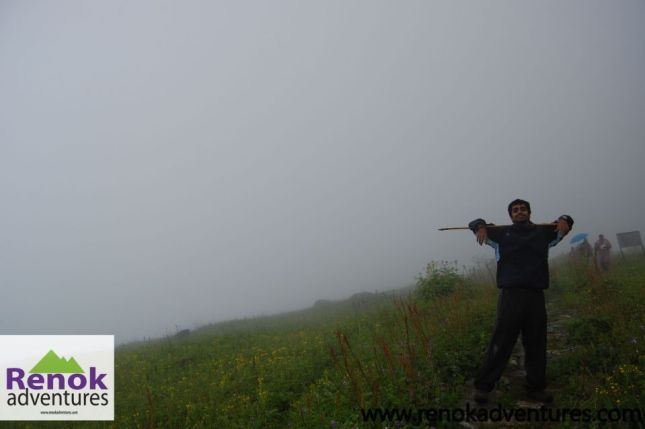
In Paradise Called Valley of Flowers
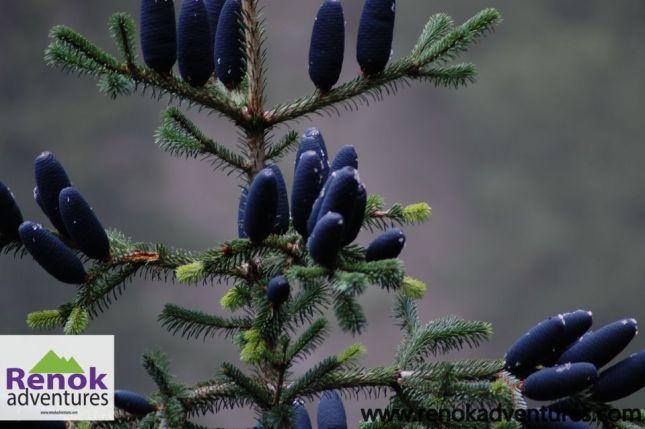
Silver Fir
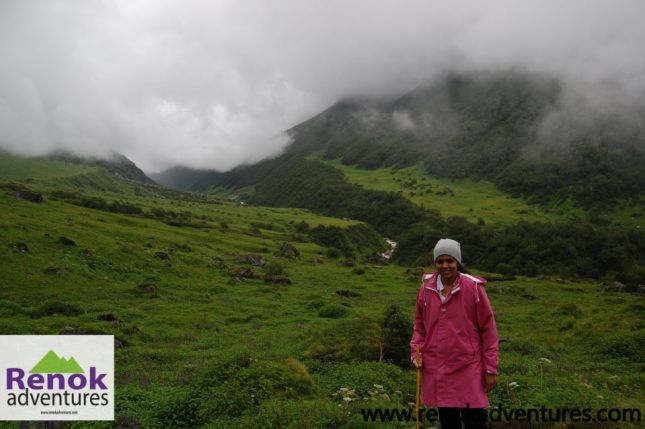
Breathtaking !!
26.917000
75.817000
Tags: flower of valley, flower valley, flowers and fruits, flowers in the valley, flowers indian, flowers of the valley, flowers of valley, flowers valley, india national park, india trekking, indian flowers, the valley of flower, the valley of flowers, travel guide for india, travel guide in india, travel guide india, travel guide of india, travel guide to india, travel india guide, travel uttarakhand, trek the himalayas, trekking in himalaya, trekking in india, trekking india, trekking the himalayas, uttarakhand travel, uttaranchal valley of flowers, valley flower, valley flowers, valley of flower, valley of flowers, valley of flowers in uttaranchal, valley of flowers uttaranchal, valley of the flowers
1. Shoot in Low Light of Sunrise and Sunrise: The low-light period around sunset and sunrise is considered one of the best times to take outdoor photos, so get up early in the morning and wait for sunset. However, shooting in low light can also be challenging for beginners. Since longer exposure times are often required in low light situations, a tripod is an essential piece of gear to bring along. Try experiment with camera’s ISO and shutter speed. Keep aperture narrow i.e. higher F number to get good depth of field.
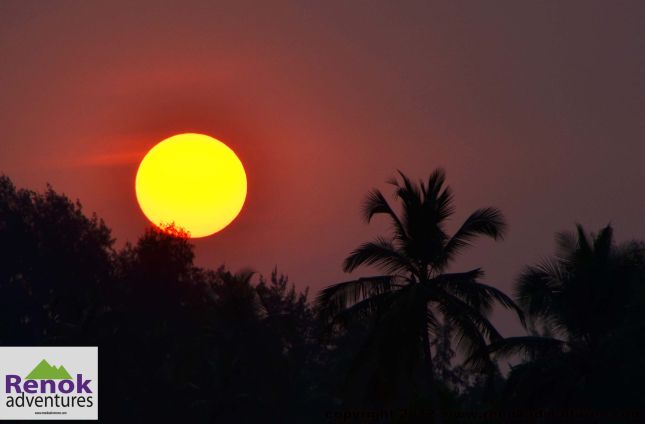
Sunset
2. Use Flash creatively: Use your flash outside on a sunny day, it will actually fill the shadow areas cast by a hat or umbrella, for example. Faces will also be brighter. Remember though, the flash has limited range, so you need to be within 10-12 feet to realize the benefit.
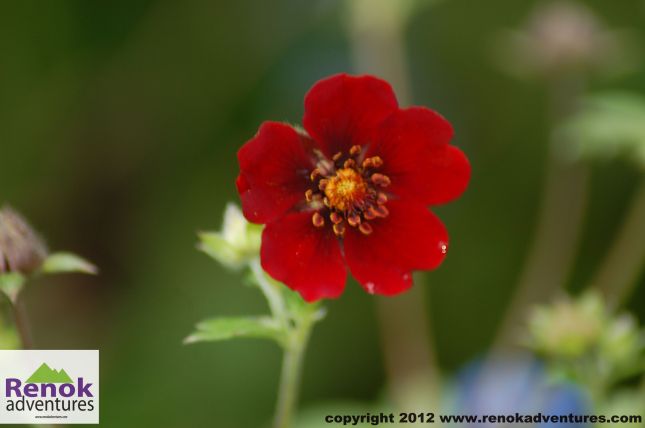
3.Add a Subject to the Landscape: By placing someone in your landscape, you can establish both a focal point and a point of reference for the composition of your image. By adding a person to the scene, the brain immediately recognizes the scale and tells you what you’re looking at. Adding someone to your landscape can also makes a photo more evocative, as viewers can more easily picture how they would fit into the scene if they were actually there.

You are in Q
4. Bad Weather is Good: Use extreme weather to create striking images with a lot of drama. Overcast days might give you flat images but you can enliven them by shooting into the light. Rays streaming through a fog or through clouds, dark, forbearing clouds, brilliant streak of light are few examples.
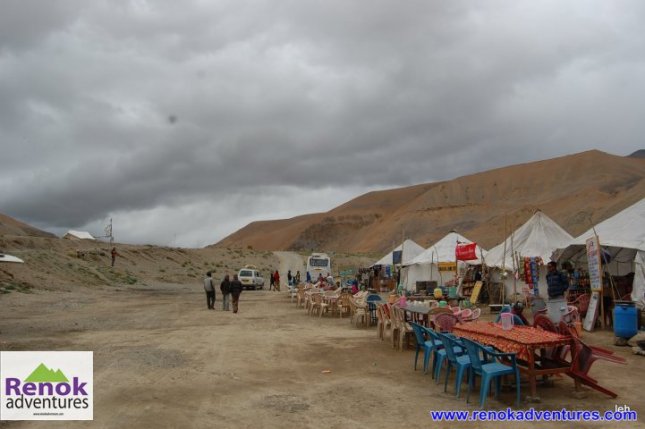
Parachute Restaurant at Pang
5. Capture motion with slow shutter speeds: Use slow shutter speeds to capture motion, milky way effect while shooting water fall.
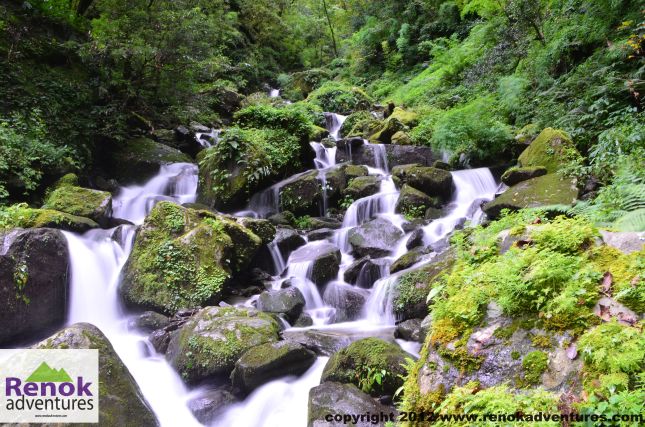
Waterfall
26.917000
75.817000
Tags: adventure travel in india, aperture, digital photography how to, goa, guide, how to shoot, india trekking, mountaineering, nature images photos, nature photographs, outdoor photography, photographer, shutter, slow shutter speed, sunset, tips, Travel, trekking, trekking in india
Trekking is one of the best ways to get in touch with nature and enjoy the beautiful world around you. Trekking is an adventure sports which involves some kind of risk. One need to take proper precautions or it could be fatal.

Renok's Trekking Group at Hampta Pass, Himalayas.
What are those life threatening dangers you need to take care on your next trekking adventure trip.
Dehydration
This may be the biggest danger on the trail especially high altitude trekking in Indian Himalayas. Many people underestimate the amount of water they need when engaged in a vigorous activity. At an altitude one looses more water than then at lower altitudes while breathing because the air is dry due to severe cold it extracts more water from your body. Because of lower temperatures people don’t feel like drinking cold water and end up being dehydrated. Signs of dehydration include thirst, sticky and dry mouth, reduced urine output, headache, dizziness and fatigue. Drink at least 3 liters of water for 4-5 Hours of hike, you can drink more than that but not less.
Sun
In addition to drinking plenty of water, you must protect yourself from the sun when you are on the trail. Sunburns are painful enough, but extreme sun damage can actually lead to infection, shock, and even death. Sun damage can also cause mutations in the skin that may result in skin cancer. Use sunscreen and reapply often, wear a wide-brimmed hat and wear clothing to protect your skin from the sun if possible. Bandanas and protective clothing are more effective than sunscreens.
Poisons
Whether you are talking about plants, insects or other animals are aware that poisonous living things lurk on the trail. Know how to recognize poisonous trees, plants, shrubs etc. The simplest way in Himalayas is ask the shepherds which you find everywhere or villager enroute and don’t be Gama in theland of Lamameans no experiments.
Parasites
Just as dangerous as the poisonous creatures are the parasites you may encounter on the trail. Don’t ever drink or swim in stagnant water, which can be the home of worms, bacteria and even deadly amoebas.
Weather
The weather can be extremely dangerous for a hiker. You should take care to track the weather before you hit the trail, and have a plan in case of inclement weather erupts when you are in the middle of your hike. I had a very bad experience while we were trekking in Sikkim,India. During our camping in Dzongri storm blew our tents, we couldn’t sleep; our eyes were full of dust. These conditions lead to acute AMS. When your body is acclimatizing for the change environment and you get bad weather that means your body needs to work hard….chances are high that AMS will hit you.
If you will be Trekking far away from your vehicle, make sure you have a plan in place in case bad weather sneaks up on you. Carry a weather radio if possible so that you can get updates on any storms heading your way. And make sure someone knows where you are in case the worst case scenario comes your way. Always be safe on the trail.
Be Safe!! Enjoy while trekking
26.917000
75.817000
Tags: hiking and walking, hiking dangers, himalayan weather, India travelling precaution, precautions, precautions in india, precautions trekking, safety while travelling to india, trek, trek safety, trekking advice, trekking dangers, trekking during parasites, trekking in himalayas, trekking in india, trekking precautions, trekking safety, trekking Sunburns, trekking tips, weather during trekking, weather himalayas

Himalayas are the youngest and tallest mountains on earth. Indian Himalayas spread from northern most part of India i.e. Jammu and Kashmir to Eastern most part Assam. The design or spread of Indian Himalayas makes them home to variety of flora and fauna. Northern most part is barren land and known as cold desert while eastern Himalayas receives highest rainfall and are kind of humid subtropical. The lower Himalayas called Shivaliks fall in the category of subtropical climatic zone.
Valley of Flowers trek is located in Chamoli Garhwal in the state of Uttarakhand, in NDBR region (Nanda Devi Bioshpere reserve). About 595 kilometres from Delhi, the altitude of valley of flowers Uttaranchal varies from 3,200 m to 6,600 m.
The stunning landscape of The Valley of Flowers National Park in northern India’s state of Uttarakhand, bordered by Nepal and Tibet, comes alive with the monsoon rain. This high-altitude Himalayan valley has around 300 different varieties of alpine flowers, which appear as a bright carpet of color against a mountainous snow capped background.
Here are the pictures from my last visit.

White Flowers

Golden Drops

Flower in Valley of Flowers

- Cobra Lily

Amazing red flowers

Valley and Flowers

26.917000
75.817000
Tags: Flower photography, ghangaria, ghangharia, govindghat, himalayan trekking tours, himalayas treking, himalayas trekking tours, himlayas trekking, images of valley of flower, india, indian himalayas trekking, NDBR, Photography, picture image photo galle, Renok, Renok Adventures, treking himalayas, treking himlayas, trekking himalayas, trekking himalayas india, trekking in himalayas, trekking in india, treks in himalayas, valley of flower, valley of flower pictures, valley of flowers, valley of flowers photo, valley of flowers trek, valley of flowers trekking, valley of flowers uttarakhand, valley of flowers uttaranchal























